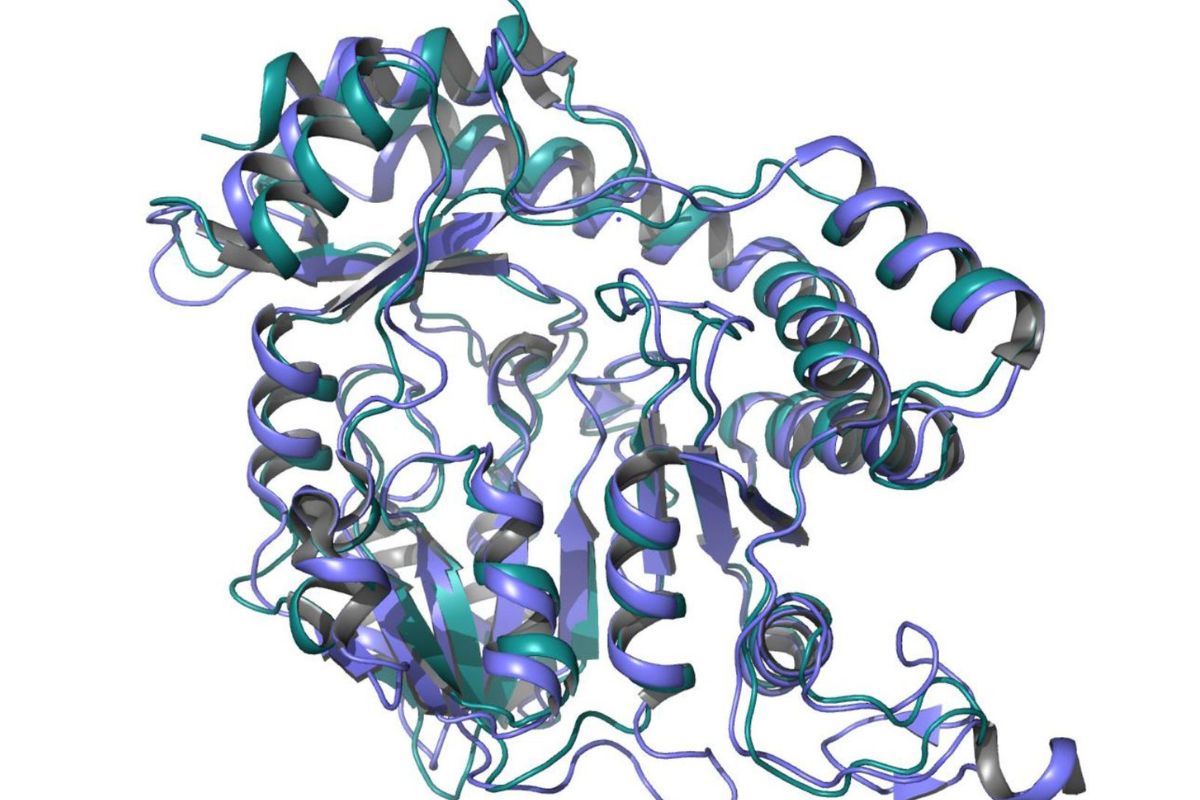
Perosamine is a unique sugar molecule that plays a crucial role in the world of biochemistry. Found in the outer membrane of certain bacteria, this sugar is a key component in the structure of lipopolysaccharides, which are essential for bacterial survival and pathogenicity. Perosamine is not just any sugar; it has a distinct structure that sets it apart from more common sugars like glucose or fructose. Understanding perosamine can help scientists develop new antibiotics and treatments for bacterial infections. This article will delve into 30 fascinating facts about perosamine, shedding light on its structure, function, and importance in both nature and medicine. Get ready to explore the intriguing world of this lesser-known but incredibly important sugar molecule!
Key Takeaways:
- Perosamine, a special sugar in bacteria, helps them evade the immune system and cause infections. It's also used in antibiotics and studied for new medical treatments.
- Scientists study perosamine to understand its role in bacterial resistance, vaccine design, and potential new drugs. Its unique properties make it valuable in research and medicine.
What is Perosamine?
Perosamine is a unique sugar molecule found in various natural products. It plays a crucial role in the structure and function of certain bacterial polysaccharides. Here are some fascinating facts about perosamine:
-
Perosamine is a hexose sugar, meaning it contains six carbon atoms.
-
It is an amino sugar, which means it has an amino group (-NH2) replacing a hydroxyl group (-OH).
-
The chemical formula for perosamine is C6H13NO4.
-
Perosamine is often found in the lipopolysaccharides of Gram-negative bacteria.
-
It contributes to the antigenic properties of bacterial cell walls, helping bacteria evade the immune system.
Biological Importance of Perosamine
Perosamine's role in biology is significant, especially in the context of bacterial survival and pathogenicity. Let's explore some key facts about its biological importance:
-
Perosamine is a component of the O-antigen in bacterial lipopolysaccharides.
-
It helps bacteria adhere to host cells, facilitating infection.
-
Some bacteria use perosamine to form protective biofilms.
-
Perosamine-containing polysaccharides can trigger immune responses in hosts.
-
It is involved in the synthesis of certain antibiotics, like erythromycin.
Chemical Properties of Perosamine
Understanding the chemical properties of perosamine can shed light on its behavior and interactions. Here are some intriguing chemical facts:
-
Perosamine is a stereoisomer, meaning it has the same molecular formula as other sugars but a different spatial arrangement.
-
It can exist in different forms, such as alpha and beta anomers.
-
Perosamine is soluble in water, making it easily accessible for biological processes.
-
It can undergo glycosylation, attaching to other molecules to form glycosides.
-
Perosamine's amino group can participate in various chemical reactions, including acetylation.
Perosamine in Medicine
Perosamine's presence in certain antibiotics and its role in bacterial pathogenicity make it relevant in medicine. Here are some medical facts:
-
Erythromycin, an antibiotic, contains perosamine in its structure.
-
Perosamine derivatives are being studied for their potential as antiviral agents.
-
Some vaccines target perosamine-containing polysaccharides to prevent bacterial infections.
-
Researchers are exploring perosamine analogs for new drug development.
-
Perosamine's role in biofilm formation makes it a target for anti-biofilm therapies.
Perosamine in Research
Scientists continue to study perosamine to uncover new applications and understand its functions better. Here are some research-related facts:
-
Perosamine is used as a model compound in carbohydrate chemistry studies.
-
Researchers are investigating perosamine's role in bacterial resistance mechanisms.
-
Structural studies of perosamine-containing polysaccharides help in vaccine design.
-
Perosamine analogs are being synthesized to study their biological activities.
-
Advances in analytical techniques have improved the detection and characterization of perosamine.
Interesting Tidbits about Perosamine
Here are some lesser-known but fascinating facts about perosamine that might surprise you:
-
Perosamine was first isolated from the bacterium Pseudomonas aeruginosa.
-
It is named after the bacterium Pseudomonas, where it was initially discovered.
-
Perosamine's structure is similar to that of other amino sugars like glucosamine and galactosamine.
-
It plays a role in the virulence of some pathogenic bacteria, making infections more severe.
-
Perosamine's unique properties make it a valuable tool in biochemical research.
Final Thoughts on Perosamine
Perosamine, a fascinating sugar, plays a crucial role in various biological processes. Found in bacterial lipopolysaccharides, it helps bacteria evade the immune system. This sugar also contributes to the structural integrity of certain antibiotics, making them effective against infections. Its unique properties have sparked interest in the scientific community, leading to ongoing research.
Understanding perosamine's functions can pave the way for new medical advancements. Scientists are exploring its potential in developing novel antibiotics and treatments for bacterial infections. By studying this sugar, researchers hope to combat antibiotic resistance, a growing global concern.
Perosamine's significance extends beyond medicine. Its role in bacterial survival and pathogenicity offers insights into microbial ecology and evolution. As research progresses, we may uncover even more applications for this remarkable sugar.
In short, perosamine is more than just a sugar; it's a key player in science and medicine, holding promise for future discoveries.
Frequently Asked Questions
Was this page helpful?
Our commitment to delivering trustworthy and engaging content is at the heart of what we do. Each fact on our site is contributed by real users like you, bringing a wealth of diverse insights and information. To ensure the highest standards of accuracy and reliability, our dedicated editors meticulously review each submission. This process guarantees that the facts we share are not only fascinating but also credible. Trust in our commitment to quality and authenticity as you explore and learn with us.
